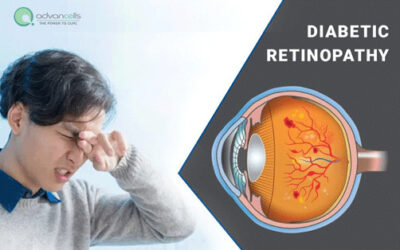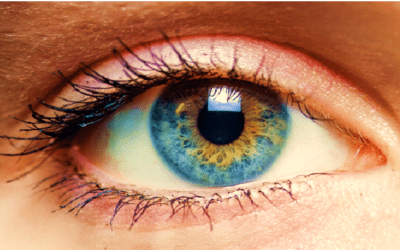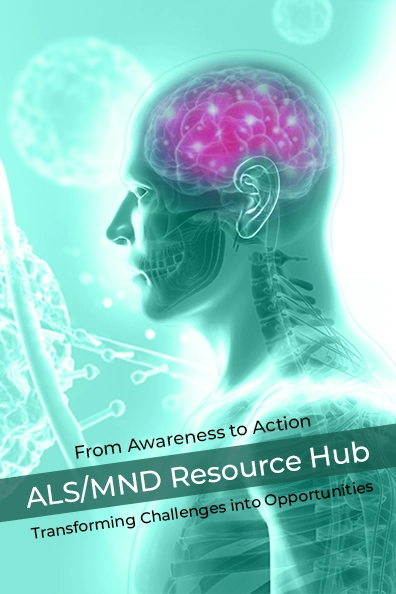Stem cells for Eye Disorders Treatment
Stem cells and Stem cell-derived Exosome Complex
We combine bold and creative pursuits in science and technology with a passion for curing eye disorders for a better quality of life.
Eye Disorders Stem Cell Treatment
The human eye is a complex yet important organ of our body filled with nerves, a lens, liquid and more. Various major components work simultaneously to capture and transmit the image to the occipital lobe of the brain via optic nerves. A functional abnormality in any of the eye’s prime components may cause serious eye problems; which if ignored, may progressively lead to vision loss.
While the conventional treatment approach is not successful in reversing the damage to the tissue, however, with great progress in the field of stem cells, it is now possible to bring back the normal vision using stem cells isolated from your own tissues such as bone marrow or adipose tissues which can be channelized to be corneal cells, photoreceptor cells, optic nerves, muscle cells etc. in the eye to regain normal function back.
Some of the common Eye Disorders are:
Optic Nerve Atrophy
Optic Nerve Atrophy is an umbrella term, characterized by a group of conditions, which limit the proper functioning of the optic nerve; i.e. transmission of accurate information about visual acuity. The optic nerve is the central oval, pinkish area of the retina and is vitally important for connecting retina of the eye with the occipital lobe, through networking of more than one million nerves and blood vessels. The occipital lobe is the part of Central Nervous System, responsible for decoding vision. Thus, damage to the optic nerve can severely affect central vision, peripheral vision and colour vision of a person. Optic nerve atrophy can be characterized with a mild to severe damage to the optic nerve, due to a number of reasons, like trauma, toxins, deficiencies, inflammation, infection and/or congenital complications.
Through conventionally available options, there is no definitive cure to reverse atrophy of the optic nerve; however, some rehabilitative approach can be incorporated, like the use of magnifying spectacles, spectacles with corrective refractive errors, regularizing pressure on the eye through the use of eye drops, etc. Alternative treatment regime with stem cell therapy for Optic Nerve Atrophy is therefore gaining prominence in medical field. Stem cell therapy for optic nerve atrophy provides a potential promise of reversing the nerve damage by neural regeneration and rejuvenation.
Retinopathy
Retinopathy or Retinitis Pigmentosa, is the most commonly occurring progressive, degenerative disorder affecting the retina of the eye. It especially affects the light-sensitive cells of the retina known as Rods and Cones. They send the information to the brain regarding every minute detail of your visualisation through the help of optic nerves. Retinitis Pigmentosa is characterized by the changes in the pigment due to resultant degeneration of optic nerves. This in turn is associated with thinning of retinal blood vessels as the demand for blood supply is lowered considerably. The predominance of this disorder is related to the genetic defect. It is believed that out of many genes responsible for normal eye functioning, one defective gene can cause this kind of retinal malformation.
Through conventionally available options, there is no definitive cure to reverse retinopathy. Alternative treatment regime with stem cell therapy for retinopathy is therefore gaining prominence in medical field. Stem cell therapy for retinopathy provides a potential promise of disease reversal by tissue regeneration and rejuvenation.
Diabetic Neuropathy
Diabetic retinopathy is a diabetes complication that affects the eyes. It is caused by the damage to blood vessels of the eye retina. Initially, diabetic retinopathy may cause no symptoms or mild vision problems, but it can cause progressive blindness. The condition can develop in patients with type 1 or type 2 diabetes. Blood sugar management and lifestyle choices are the major management systems for diabetic neuropathy.
Through conventionally available options, there is no definitive cure to reverse diabetic retinopathy. Alternative treatment regime with stem cell therapy is therefore gaining prominence. Stem cell therapy for diabetic retinopathy provides a potential promise of tissue regeneration and rejuvenation for the reversal of eye damage.
Eye Injuries
The surface of the eye is made up of thin, transparent dome called as the Cornea. The cornea covers the entire iris and the pupil. The first ray of light that is refracted from the image, strikes the cornea. Since the part is exposed, it is more prone to injuries. There are various reasons of eye injuries such as flying dust, a foreign object like metal or sand, a fingernail, an animal claw may cause a damage. A minor scratch or corneal abrasion may lead to corneal ulcers if unnoticed for a longer period of time.
Through conventionally available options, there is no definitive cure to reverse eye injury. Alternative treatment regime with stem cell therapy for eye injury is therefore gaining prominence in medical field. Stem cell therapy for eye injury provides a potential promise of tissue regeneration and rejuvenation for reversal of eye tissue damage.
Stem Cell Therapies for Eye Disorders: Advancells Protocol
Patients looking for Macular Degeneration treatment in India can be treated by implanting stem cells through retrobulbar or other effective modes to obtain maximum recovery. Advancells is excited by the prodigious prospects of stem cell therapy in becoming the best treatment for macular degeneration. Our principle objective has always been the stoppage of disease progress and easing the quality of life to a considerable extent in a non-surgical way. Our top priority is to provide a very comprehensive and tailor-made treatment of macular degeneration with the maximum recovery. With extensive research these challenges are now comprehensible to therapeutic ventures resulting in new treatments of macular degeneration using autologous treatment/allogenic transplant for adipose-derived mesenchymal stromal cells treatment and bone marrow stromal cells treatment. This new insight on the treatment of eye disorders has helped in identifying the potential to overcome macular degeneration with stem cells, primarily using autologous stem cell transplant in form of hematopoietic stem cell transplant or mesenchymal stromal cells treatment.
Stem Cell Treatment of Macular Degeneration at Advancells is divided into 4 Steps
Treatment Qualification
Source Extraction
Processing of stem cells
Re-infusion
Must Read Articles on Macular Degeneration
Diabetic Retinopathy – Symptoms, Causes, Stages and Treatment
What is Diabetic Retinopathy? Diabetic retinopathy is an eye disorder that can affect people with type 1 diabetes and type 2 diabetes. When this develops, raised blood sugar levels harm the retina's blood vessels. They have the potential to expand and leak....
Age-Related Macular Degeneration: Symptoms, Causes, and Treatment
Vision is, undoubtedly, our most crucial sense; we count on it to successfully navigate our environment. Blindness has an enormous influence on a person's life, but many of the conditions that cause it are difficult or impossible to treat right now. The causes of...
Optic Nerve Atrophy: Causes, Symptoms And Regenerative Therapy
Eyes are the door to the outside world, but what if your outside world comes with a blur? The optic nerve behind your eyes is the most vital quotient for your vision as it helps the brain to visualize your perception, but glaucoma, tumor, injury, or blood loss can...
Statistics of Overall Improvement of Macular Degeneration through Stem Cell Therapy

Conventional treatments cannot restore vision, they may act as supportive therapies to delay the progression of the disease. Regenerative Therapies via Stem Cells have the potential to replace damaged cells. At Advancells, we offer the treatment which is completely autologous transplantation of stem cells isolated from your Bone Marrow and Adipose Tissue. The information guide covers every aspect of the disease that one should be aware of regarding the treatment of Eye Disorders via stem cells.
Significant Visual Improvement
Reduction in Pain
Decreased scarring
Reduced Figures
Stoppage and Delayed Progression of the Disease
Recent Eye Disorder’s Patient Case Stories
Many of the patients, who have undergone treatment with Advancells have reported significant improvement in their eyesight as well as eye movements. Their recovery has been very quick after treatment.
Find out how Stem Cell Therapy is improving the lives of patients suffering from Eye Disorders





